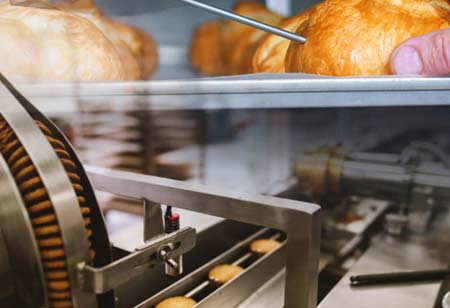THANK YOU FOR SUBSCRIBING
Be first to read the latest tech news, Industry Leader's Insights, and CIO interviews of medium and large enterprises exclusively from Food and Beverage Tech Review
Role of Precision Viticulture inPremium Quality Wine Production
Precision viticulture technologies can assist with long- and short-term farming tactics to enhance grape quality.

By
Food and Beverages Tech Review | Thursday, March 17, 2022
Stay ahead of the industry with exclusive feature stories on the top companies, expert insights and the latest news delivered straight to your inbox. Subscribe today.
Winegrowers cannot alter the vine's natural conditions; nevertheless, new and enhanced precision viticulture equipment can better understand a specific vineyard location and vintage weather conditions.
FREMONT, CA: Precision viticulture technologies can assist with long- and short-term farming tactics to enhance grape quality. Terroir selection, vine planting, training, variety, and rootstock selection are long-term decisions. Each affects vine development and grape composition and should be chosen carefully due to their inability to be modified. While short-term techniques apply to managing the canopy, soil, and water availability in a particular vineyard zone on a seasonal basis.
While precision viticulture technology can aid in long-term production strategy decisions by monitoring the vineyard site and climate over time, for winemakers, long-term decisions are typically more expensive since they entail changing grape varieties and rootstocks, relocating vineyards to more poleward or higher elevation locations, or producing various wine types in response to climatic change. While short-term measures can be done very inexpensively and are based on the "current" vintage, they cannot address all of the naturally occurring variability in the vineyard. For instance, alter the irrigation regime, vary the harvest date among grape plots, or manage the canopy selectively among vineyards.
Since weather varies significantly from year to year, grape quality differs considerably from vintage to vintage. To help winegrowers adapt vineyard management practices to the vintage, precision viticulture technologies have been developed. Numerous precision viticulture technologies have been created over the last few years.
Vineyards can be highly diverse in pedo-morphological traits, cropping patterns, and seasonal weather. And all of these subtle variances within vineyards result in distinct physiological reactions in the vine that are not always visible to the naked eye. The technology is now available to precisely monitor all variability, quantify the parameters that control vine productivity and quality, and model critical correlations based on measured data. These models are then utilized to influence cultural practice spatially. The crucial point is that they recognize regional heterogeneity and recommend increasing vineyard management efficiency to increase grape quality in a given vintage. To mention a few precision monitoring technologies that can assist winemakers in producing high-quality grapes: geolocation, remote sensing devices, satellites, unmanned aerial vehicles (UAVs), wireless sensor networks, agbots, spectrophotometers, and electromagnetic sensors.
I agree We use cookies on this website to enhance your user experience. By clicking any link on this page you are giving your consent for us to set cookies. More info







